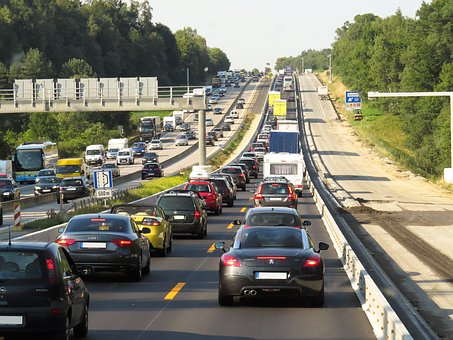Trump Administration Weakens Auto Fuel Efficiency Rules

The U.S. Environmental Protection Agency and Department of Transportation’s National Highway Traffic Safety Administration on March 31 finalized fuel economy and carbon dioxide emissions standards for cars and light trucks for model years 2021 to 2026. The Safer Affordable Fuel-Efficient, or SAFE, Vehicles Rule increases the stringency of these standards by 1.5 percent a year, weakening an Obama-era rule that would have required increases of about 5 percent per year. The move, which marks the largest deregulatory action of the Trump administration, establishes one set of national standards and is expected to increase U.S. competitiveness by reducing regulatory costs by up to $100 billion through model year 2029.
The overall industry average required fuel economy in MYs 2021-2026 is projected to be 40.4 miles per gallon (mpg), lower than 46.7 mpg in MY 2025 under the 2012 standards. The rollback of fuel economy standards in the U.S. has multi-dimensional impacts on the auto industry, people’s lives, and the environment. According to the agencies’ projections, the SAFE Vehicles Rule will not only increase the U.S. auto industry’s competitiveness by reducing regulatory costs by almost $100 billion, but also boost new vehicles sales by up to 2.7 million vehicles through model year 2029. The rule will also enable Americans to afford newer and safer vehicles at a lower price. The average sales price of a new vehicle will decrease by $1,000 and the total cost of ownership will be lowered by $1,400.
In the first phase of the SAFE rule, the EPA announced its withdrawal of a 2013 waiver that allowed California to pursue its own tailpipe pollution standard and zero-emission vehicle mandate, affecting more than a dozen states that have adopted California’s clean cars program. California, joined by 22 other states, filed a lawsuit challenging the decision. The lawsuit also includes a request to review a regulation by the NHTSA to preempt California’s right to set tailpipe emission standards.
Clean energy advocates criticized the rollback, raising concerns about climate impact, given that the transportation sector is the largest source of emissions in the nation. Drawing on EPA’s own data, the Natural Resources Defense Council noted that the vehicle emissions standards reduced emissions about 455 million metric tons and helped consumers save $86 billion in gasoline.
The National Automobile Dealers Association welcomed the rule, applauding the agencies’ efforts to “right-size” the fuel economy and emissions rules and noting that these standards should be “examined through the lens of consumer affordability.”
The SAFE Vehicles Rule is expected to reinvigorate American auto manufacturing by introducing more economical and achievable fuel economy and vehicle emissions standards. However, the new mileage standards could have adverse implications for the electric-vehicle market. Obama-era fuel efficiency rules combined with California’s zero-emission vehicle mandates has been the mainstay of environmental policy to address transportation sector emissions. According to advocacy group Consumer Reports, the new rules would result in consumers losing about $300 billion, even after considering potentially lower new vehicle prices.
EnerKnol Pulses like this one are powered by the EnerKnol Platform—the first comprehensive database for real-time energy policy tracking. Sign up for a free trial below for access to key regulatory data and deep industry insights across the energy spectrum.
ACCESS FREE TRIAL


